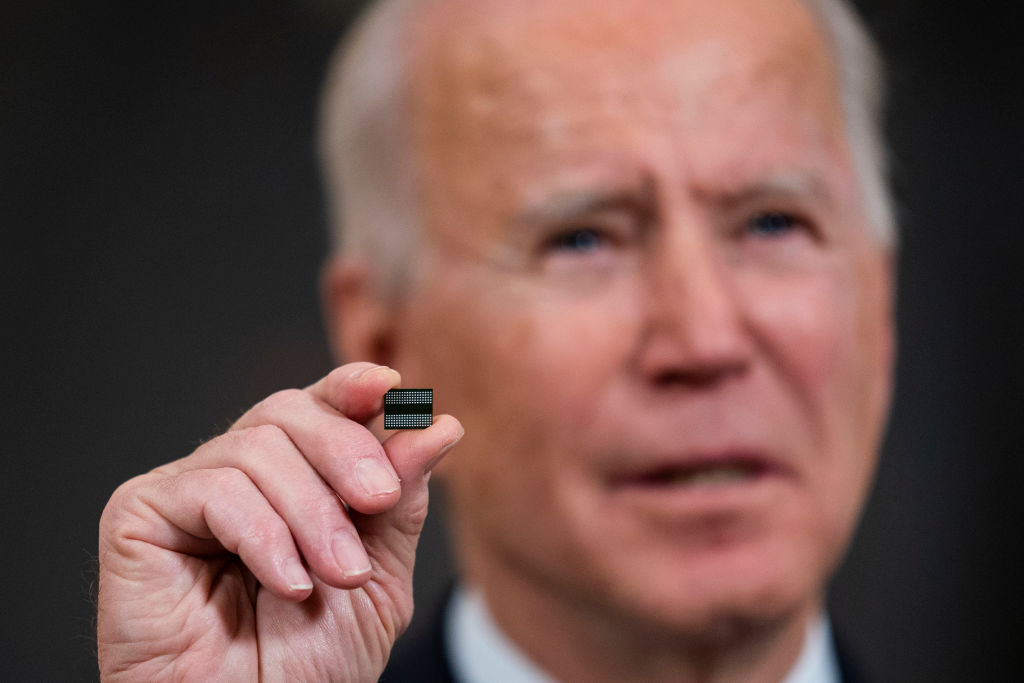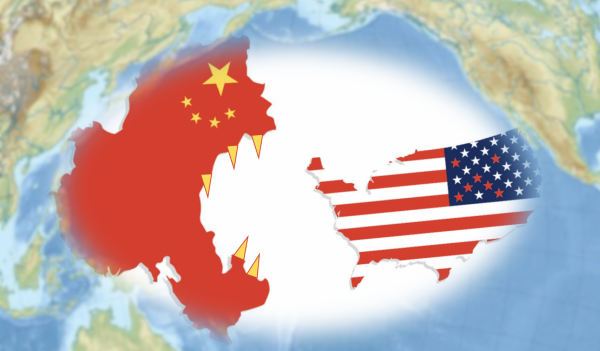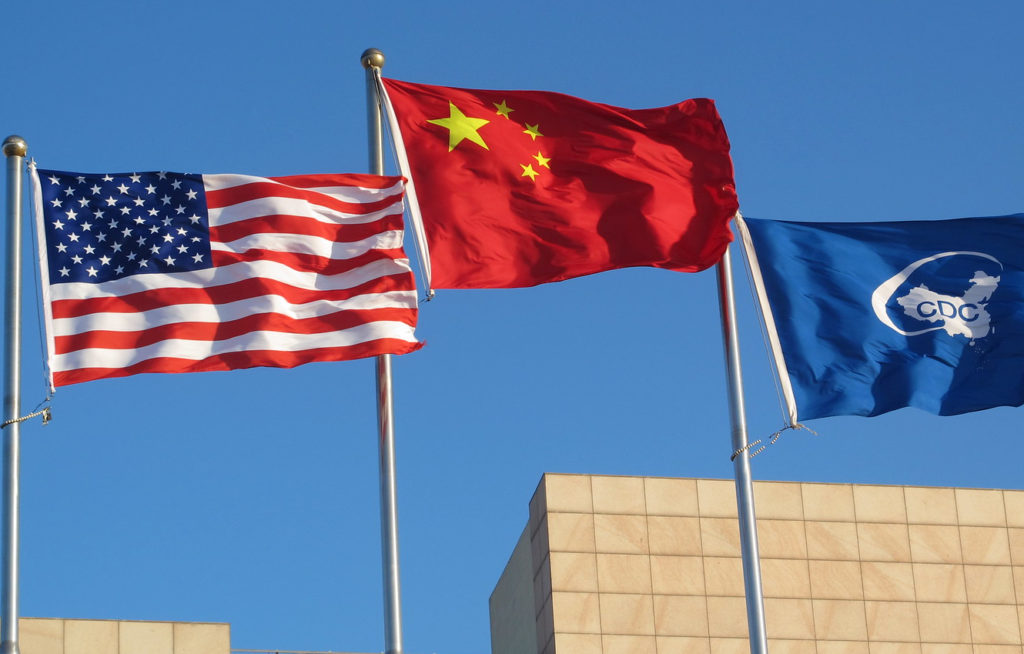Actual policymakers have to do that.
The Chips are Down

A Chinese invasion of Taiwan would crater American tech dominance and military readiness.
Russia’s nuclear arsenal is the principal reason given by the United States and NATO for refusing to engage Russia directly in Ukraine. Nuclear war also will be a risk if China invades Taiwan.
There are, of course, differences in an analysis of the U.S. response to a potential Chinese invasion of Taiwan. For one, without NATO, the U.S. would largely face China on its own. Also, China has a stronger claim on Taiwan than Russia does on Ukraine. On the other hand, much more importantly to the United States, Taiwan is the world’s principal fabricator of semiconductor chips. Semiconductors are the new oil. Whoever controls semiconductors can control the world.
According to the Semiconductor Industry Association (SIA), although the U.S. is the world’s leader in headquarters for companies generating semiconductor demand (33 percent) and for end users (25 percent), the U.S. manufactures just 19 percent of all chips, while mainland China supplies 35 percent and Taiwan 15 percent. If China invades Taiwan, 50 percent of the world’s chip production will be controlled by China.
Taiwan may manufacture only 15 percent of all chips, but it manufactures 92 percent of the world’s advanced chips. All advanced chips not made in Taiwan are manufactured in South Korea; none are produced in the United States or Europe. If China were to invade Taiwan, the U.S. and the world could lose access to almost all leading-edge chips, almost two-thirds of more-mature microprocessors, and half of all dynamic random-access memory (DRAM) chips.
Research firm TrendForce advises that 54 percent of global chip manufacturing revenue last year was received by just one company, Taiwan Semiconductor Manufacturing Company Ltd. (TSMC). TSMC accounts for more than 90 percent of the global output of advanced chips—98 percent of Taiwanese production. According to Reuters, TSMC’s headquarters and all of its foundries are located close to likely landing sites for a Chinese invasion.
The United States is the global leader in creating and owning chip intellectual property (IP), though China is running a close second. If China takes Taiwan, it will obtain access to virtually all U.S. chip IP, and an unsurpassable lead. Even without invading Taiwan, China is poised to surpass U.S. research and development (R&D). Based on Organization for Economic Cooperation and Development data, SIA determined that in 2018, China’s semiconductor R&D was just 5 percent below the U.S. in purchasing power parity, though the gap was wider for basic research. However, SIA warns that China is planning large increases in basic research, threatening the U.S. lead in all chip R&D.
The global chip market grew 25 percent in 2021 to $550 billion; 11 percent growth is forecast for 2022. With strong growth anticipated for connected devices, artificial intelligence and edge computing, demand for chips is expected to accelerate, reaching $1 trillion by 2030, according to the European Commission, the executive branch of the European Union.
Bharat Kapoor, a senior partner in A.T. Kearney’s technology practice, observes that “superpower status is going to be defined by the ability to make semiconductors.” A Reuters analysis warns that allowing an increasingly powerful China to overrun TSMC’s foundries would threaten U.S. military and technological leadership, while the destruction of the plants would damage China, as well.
In the face of an increasingly belligerent China, and its repeated overflights of the Taiwan air defense identification zone, the U.S. is already well behind developing and implementing plans to address the loss of Taiwan, let alone supply shortages caused by Covid.
Nearly a year after the Senate passed legislation authorizing $52 billion to support manufacturing and R&D for semiconductor companies in the U.S., last month, the House passed similar legislation, allocating only $19 billion of the total to manufacturing. A conference committee will have to resolve the differences.
Also last month, the European Commission recommended the European Parliament and member countries adopt the Chips Act, a $48 billion plan to bolster Europe’s competitiveness in semiconductor technologies, and reduce reliance on Asian manufacturers. The investment will be staged through 2030 and will include investments in next-generation technologies, providing access to design tools and pilot lines for prototyping and testing, and support for start-ups and expansion.
Japan recently announced $8 billion to support increases in chip production.
These paltry, multi-year investments have to be assessed against the cost of foundries, TSMC’s investments in Taiwan, and investments being made in other Asian countries.
Last year, Semico Research president Jim Feldhan estimated that building and equipping a foundry for chip manufacturing requires an investment of at least $10 billion, and up to 30 months to ramp up production. Last month, Will Hunt, who leads semiconductor policy research at Georgetown University’s Center for Security and Emerging Technology, wrote in the Wall Street Journal that the “window of opportunity to shift the center of gravity of global chip-making back the U.S. is rapidly closing, as the cost of building advanced semiconductor manufacturing facilities is rising exponentially. By 2030, a single plant may cost more than $50 billion.”
During 2021, TSMC invested about $28 billion to expand its capacity in Taiwan and announced plans to invest a further $100 billion. That’s more than triple the proposed U.S. and EU investments in manufacturing.
Last year, Intel announced a $20 billion investment in advanced chip manufacturing capacity in Arizona, and has signaled that its investment in all chip manufacturing could reach $100 billion. Samsung has announced a $17 billion plant near Austin, set to open in late 2024. TSMC also announced a $12 billion Arizona foundry to make chips for Apple.
Semiconductors, principally flash memory, are already South Korea’s largest export. Samsung’s South Korean foundries are the only manufacturers of advanced chips outside of Taiwan. In May 2021, South Korea announced a 10-year program to bolster its semiconductor manufacturing industry, with the government contributing about $225 billion in tax credits to be matched by private sector investments. The plan’s goal is to expand capacity for advanced chips.
According to a Congressional Research Service report, China has already committed $150 billion to fund development of its semiconductor industry. The European Commission estimates that the fund will be fully invested by 2025. In October 2019, China announced a further $29 billion investment.
At best, if China stays out of Taiwan, planned investments may ameliorate current shortages over the next 24 months, as the West falls further behind Asian manufacturers.
Absent timely action, if China acts against Taiwan, grievous damage will be done to U.S. security interests and the economy if China either destroys or diverts existing production. Critical U.S. secrets will be handed over to China.
There is no good choice here and probably not enough time to avoid a crisis. Still, the United States and its allies must step up efforts to deter a Chinese invasion. Every decision the U.S. and its allies make about Ukraine will affect China’s calculus. The West must do everything feasible to buy time, and must use that time to strongly incentivize investments in chip manufacturing, particularly advanced chips. As soon as it is feasible, the U.S. must prohibit the export of sensitive IP to Taiwan.
If the clock runs out before the West is able to develop local manufacturing capacity for the chips it needs for national and economic security, the risks of war in the defense of Taiwan may be secondary to the hazard of U.S. subjugation to China.
The American Mind presents a range of perspectives. Views are writers’ own and do not necessarily represent those of The Claremont Institute.
The American Mind is a publication of the Claremont Institute, a non-profit 501(c)(3) organization, dedicated to restoring the principles of the American Founding to their rightful, preeminent authority in our national life. Interested in supporting our work? Gifts to the Claremont Institute are tax-deductible.
America’s unserious political class is totally unequipped to deal with the threat.
The origins of our current Cultural Revolution



